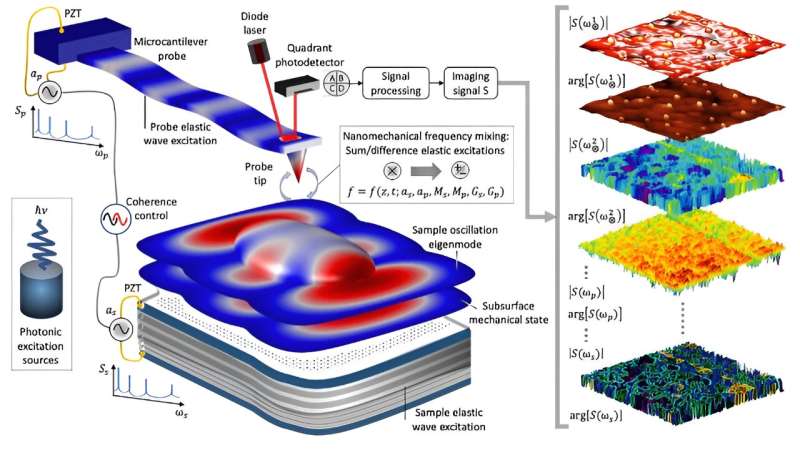A new nanoscience study led by a researcher at the Department of Energy’s Oak Ridge National Laboratory takes a big-picture look at how scientists study materials at the smallest scales.
The paper, published in Science Advances, reviews leading work in subsurface nanometrology, the science of internal measurement at the nanoscale level, and suggests quantum sensing could become the foundation for the field’s next era of discoveries. Potential applications could range from mapping intracellular structures for targeted drug delivery to characterizing quantum materials and nanostructures for the advancement of quantum computing.
“Our goal was to define the state of the art and to consider what’s been done and where we need to go,” said Ali Passian, an ORNL senior research scientist and senior author of the study.
“Everybody wants to know what’s below the surface of materials, but finding out what’s really there tends to be incredibly challenging at any scale. We hope to inspire a new generation of scientists to tackle this challenge by exploiting quantum phenomena or whatever the most promising opportunities may be, so we can push the boundaries of sensing and imaging science toward greater discoveries and understanding.”
Particles at the nanoscale act as the building blocks of quantum science—just small enough to enable scientists to tweak major properties of materials with maximum precision. One nanometer equals a billionth of a meter, a millionth of a millimeter and a thousandth of a micrometer. The average sheet of paper, for example, runs about 100,000 nanometers thick.
Passian and co-author Amir Payam of Ulster University suggest the nanoscale level may be not only where intricate molecular assemblies of biological systems such as cell membranes form but also where the dimensions of emerging materials such as metasurfaces and quantum materials align. So far, it’s an underexplored opportunity, they conclude.
Breakthrough tools like the scanning probe microscope, which uses a sharp-tipped probe to inspect samples at the atomic level, have helped speed advances in the nanometrology of surfaces. Subsurface studies have achieved fewer comparable breakthroughs, the authors note.
“All of our senses are geared toward surfaces,” Passian said. “Though still difficult, we have extended our reach to the nanoscale by somehow disturbing the material using light, sound, electrons and tiny needles. But once there, measuring what’s beneath remains extremely challenging. We need new methods that allow us to peer inside these materials while leaving them intact. Quantum science may offer opportunities here, particularly quantum sensing, where for example, the quantum states of the probe, the light and the sample could be capitalized upon.”
The authors suggest quantum sensing techniques now in the early stages of development could hold the key to advances in subsurface exploration. Quantum probes, for example, could employ skyrmions—subatomic quasiparticles created by disruptions in magnetic fields and already under consideration for other quantum applications—to probe deeper than any current technique allows.
“People are working hard to push the limits of detection and create new measurement modalities,” Passian said. “I think the next few years will be exciting in terms of materialization and user-friendly implementation of these techniques toward achieving quantum nanometrology of surfaces and the subsurface regions.”


